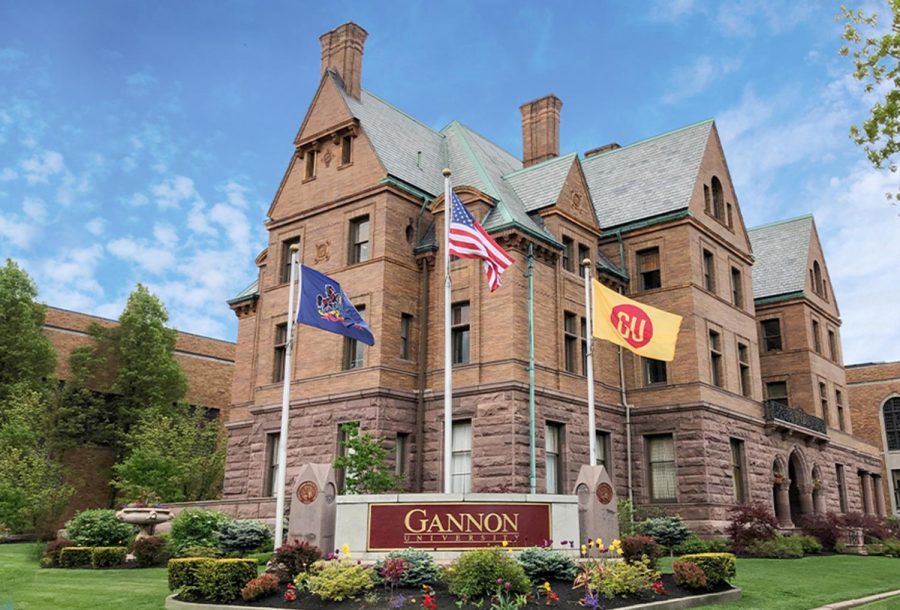Faculty Column: Mindfulness and contemplation
August 25, 2020
One thing I knew when I accepted the opportunity to teach at Gannon this semester is that things would be different. Yet, the word “different” is a bit of an understatement. Both K-12 and higher education settings are working through unprecedented challenges regarding the safety and well-being of their students, faculty and staff.
I have the opportunity to teach at a much larger university this semester as well as at Gannon, and I can report without reservation that Gannon is doing a wonderful job. A big part of Gannon’s success thus far ties in with Gannon’s Catholic identity, because that identity brings with it a mindful or perhaps contemplative approach.
As a mindfulness and compassion researcher with interests in both secular and nonsecular mindfulness and contemplative practices, it is easy to see this important aspect of the Catholic tradition and its impact on the Gannon community right now.
Mindfulness practices and contemplative practices – two sides of the same coin – require practitioners to be aware of their experience.
Being aware in a mindful or contemplative way tends to foster a more focused state of mind, more deliberate decision-making, and as emerging research shows, an increase in compassion for ones’ self and others. It requires a single point of focus, like focusing on God’s presence in a sustained way.
It could, however, include less grandiose foci like the breath, or saying the rosary, or perhaps taking deliberate steps to promote good health and community.
It’s happening everywhere at Gannon. Each time students put on a mask they are being mindful, even just in the physical act of doing so. Each time they open their LiveSafe app and complete the questions about their health they are slowing down to care for themselves and others.
It’s even evident as they complete and turn in assignments, because it would be easy to walk away from college right now, as fluid as everything is, but they don’t. They’ve searched inward and decided this semester is going to be a success. They’re the next generation of contemplatives.
Catholicism has had a robust contemplative identity since St. Paul’s conversion. St. Paul may in fact be the first Christian mystic followed by Christian notables such as St. Thomas Aquinas, St. Teresa of Avila, Thomas Merton and St. John Paul II, and many, many more. Catholic mysticism, like mysticism in other spiritual traditions, emphasizes journeying inward more so than journeying outward when striving to commune with God.
Therefore, there is a sense of individualism in that mystics search themselves for answers, albeit often with the help of a spiritual mentor.
Once again, we need only turn our focus to the students to see just how well Gannon is doing in a time when schools and businesses are struggling as a result of public health and economic challenges. Students ask if they can help disinfect the tables, chairs and door handles before and after class.
They’re emailing when something comes up to make sure they are being clear communicators. What’s more, as I look at their young, bright, masked faces during our 90-minute classes, I can see their immense resolve to have a college experience marked by fond memories and academic excellence.
It continues to be a highlight of my professional career to have the opportunity to teach at Gannon this semester. Gannon is a big, maroon and gold light in what has been a dark time in America and around the world. I feel blessed.
KEVIN BRIGGS






Arun • Sep 17, 2020 at 3:26 am
Congratulations on your newfound success. It is always a happy feeling when we advance in our career. But the pandemic has made life challenging for many, and it is going to be a tough fight. We need to be mentally strong. I refer to online journals on healthy lifestyle and practices. I got to read an article about mindfulness in https://www.anitajoyanderson.com/. It threw light on various aspects of meditation, mindfulness and healthy practices
John J kuykendall • Aug 27, 2020 at 10:17 pm
Salutations to the Divinity within you and for the mindfulness you are sharing with your students. We can’t change the world for the better or we can, but we have to start with transformation of our own consciousness. Jesus was pointing to this with his life as he pointed to the one Consciousness he called Father. Thanks for the article.